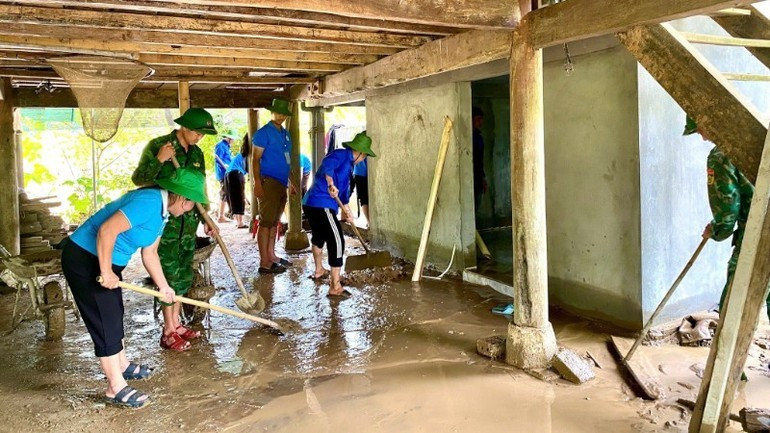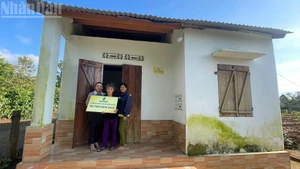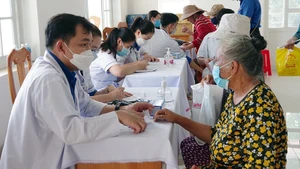While central and local authorities are currently focused on supporting residents in storm-hit areas, restoring normal life in these regions will require significant time and effort.
Prior to the storm, more than 1.1 million hectares of rice and crops had been planted in the northern mountainous provinces, midlands, Red River Delta, and north-central regions. At the height of the flooding, over 119,000 hectares of rice fields were submerged, with Hung Yen, Ninh Binh, and Thanh Hoa among the hardest-hit provinces.
In response, local irrigation authorities deployed hundreds of pumping stations to drain floodwaters and save crops. However, as of the morning of July 25, 54,415 hectares remained under water.
In addition to agricultural losses, thousands of houses were damaged, and numerous communities remained isolated, affecting tens of thousands of households.
In the spirit of mutual support, many individuals, organisations, and local authorities promptly provided financial aid, essential supplies, and food to residents, particularly those in isolated areas. Clean-up efforts are being carried out swiftly under the principle “clean as the waters recede.”
To help stabilise people’s lives, local governments must prioritise evacuating residents from high-risk areas; mobilise forces to clean and repair homes, clear mud and debris; and ensure the supply of essential goods and clean water.
At the same time, infrastructure including transport, electricity, and water systems must be rapidly restored. Authorities must also strictly prevent hoarding and price manipulation of essential goods.
Efforts to resume agricultural production are also critical. Localities are urged to continue operating pumping stations and support farmers in cleaning up fields and replanting crops. Submerged rice fields beyond recovery should be replanted using reserve seedlings. Where recovery is possible, farmers should clean damaged leaves to aid photosynthesis and promote growth.
Given the heightened risk of disease due to contaminated water, spoiled food, and poor sanitation during and after flooding, the health sector must ensure proper care, environmental disinfection, and water treatment.
Water sources must be filtered and disinfected before use, following health guidelines. Food that has been exposed to floodwaters or shows signs of spoilage must not be consumed.
















